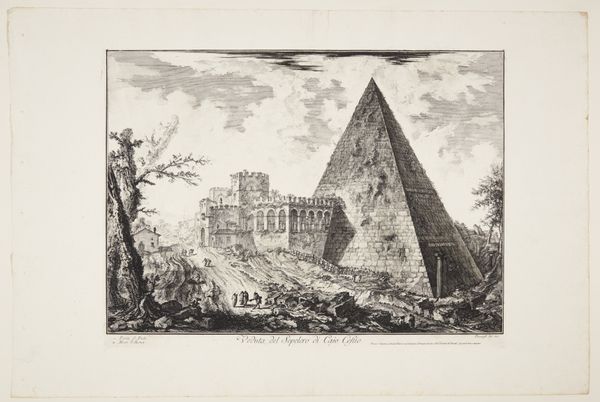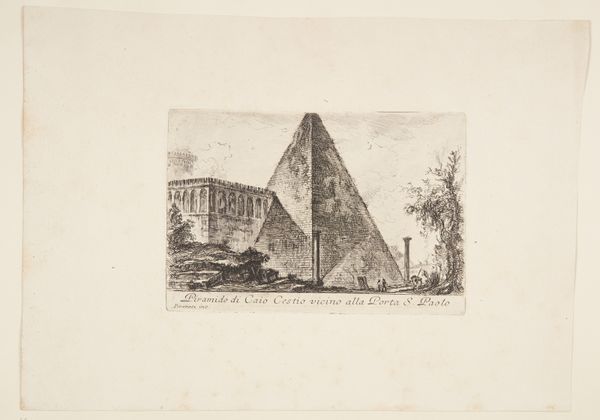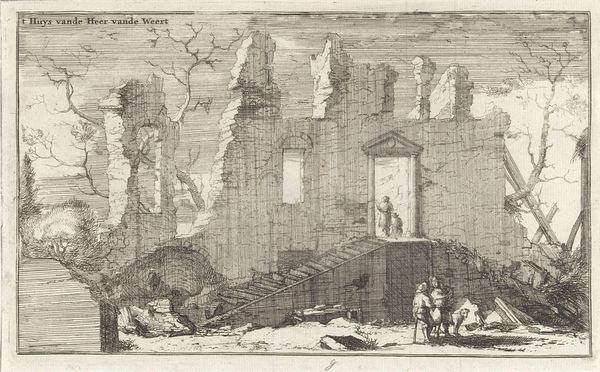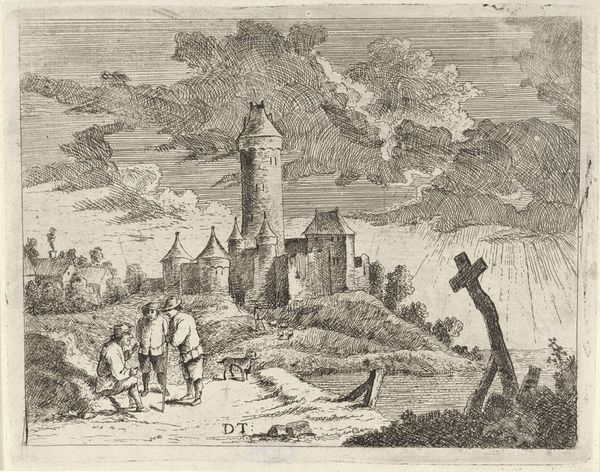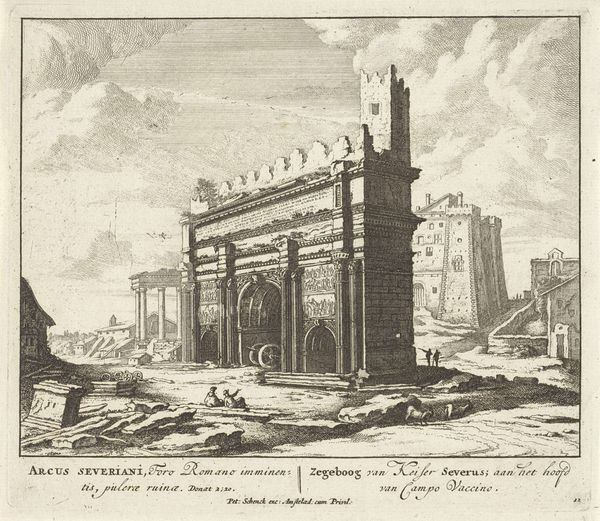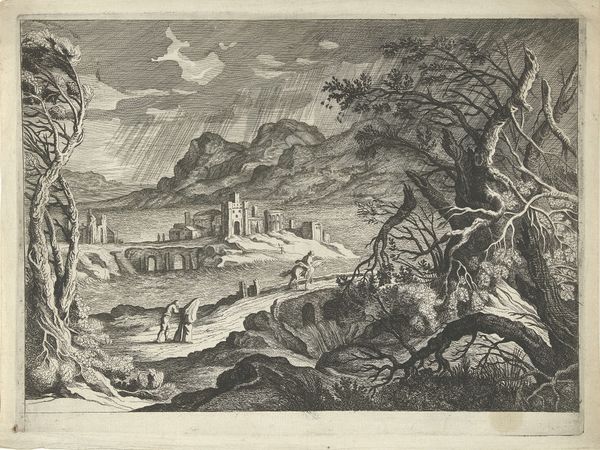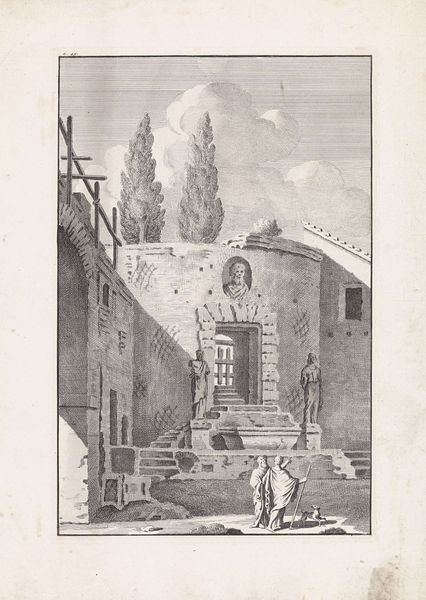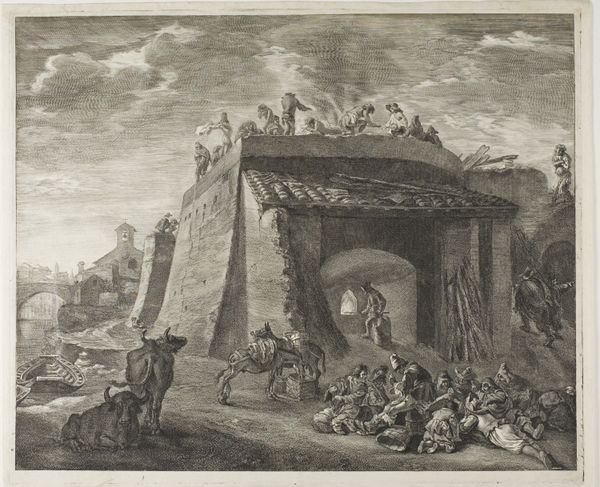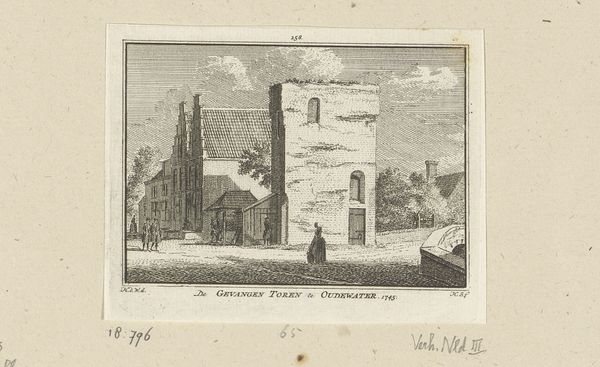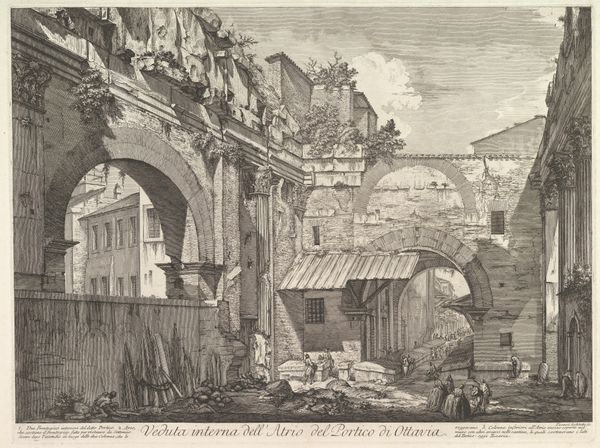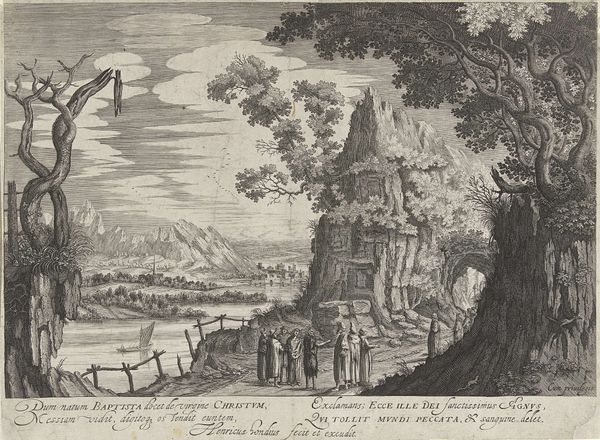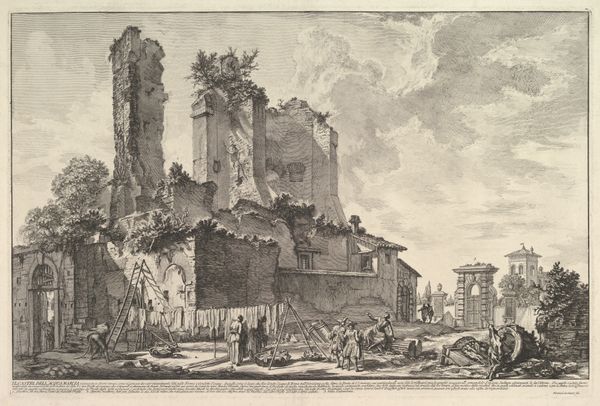
print, engraving, architecture
#
neoclacissism
# print
#
landscape
#
engraving
#
architecture
Dimensions: height 399 mm, width 550 mm
Copyright: Rijks Museum: Open Domain
Domenico Montaigù's print captures the Pyramid of Cestius in Rome, a monument erected in the first century B.C. The pyramid form, a clear borrowing from Egyptian culture, was associated with death and the afterlife, symbolizing eternal rest and resurrection. This appropriation of Egyptian motifs, like the obelisks that also dotted Rome, marks a fascinating cultural exchange. It calls to mind how the Renaissance obsession with classical antiquity led to the rediscovery of Egyptian art and philosophy, revealing a similar fascination across millennia. The pyramid’s shape itself—a grounded base rising to a singular point—appears across cultures, from Mesoamerican temples to modern architectural designs, each time imbued with connotations of power, divinity, or the sublime. Consider how these symbols have been subconsciously embedded in our collective memory. The pyramid, a testament to Cestius's desire for enduring fame, now sparks a dialogue about how civilizations immortalize themselves and the echoes they leave behind. The image embodies a non-linear progression; evolving, resurfacing, and accumulating new meanings across time.
Comments
No comments
Be the first to comment and join the conversation on the ultimate creative platform.
